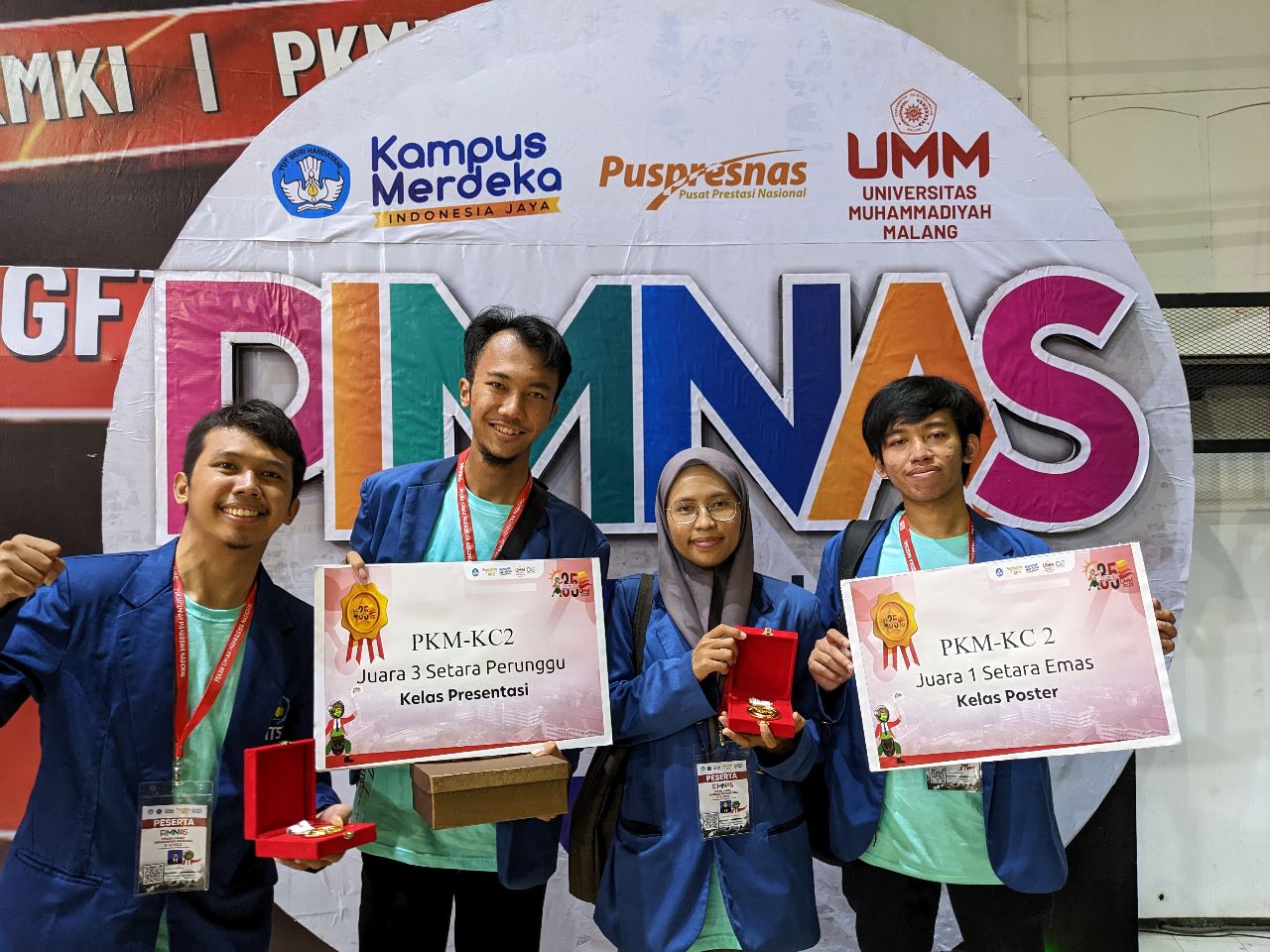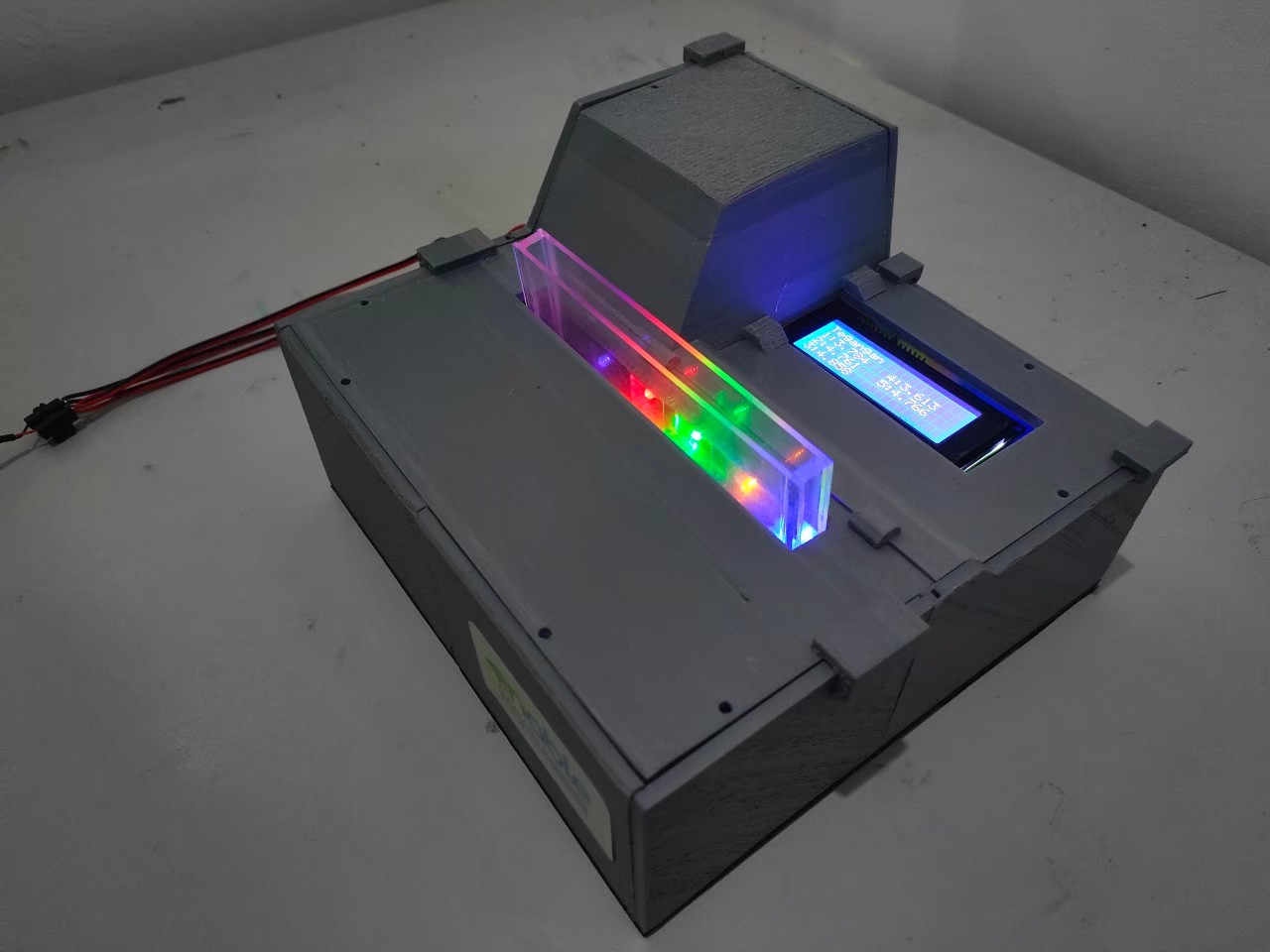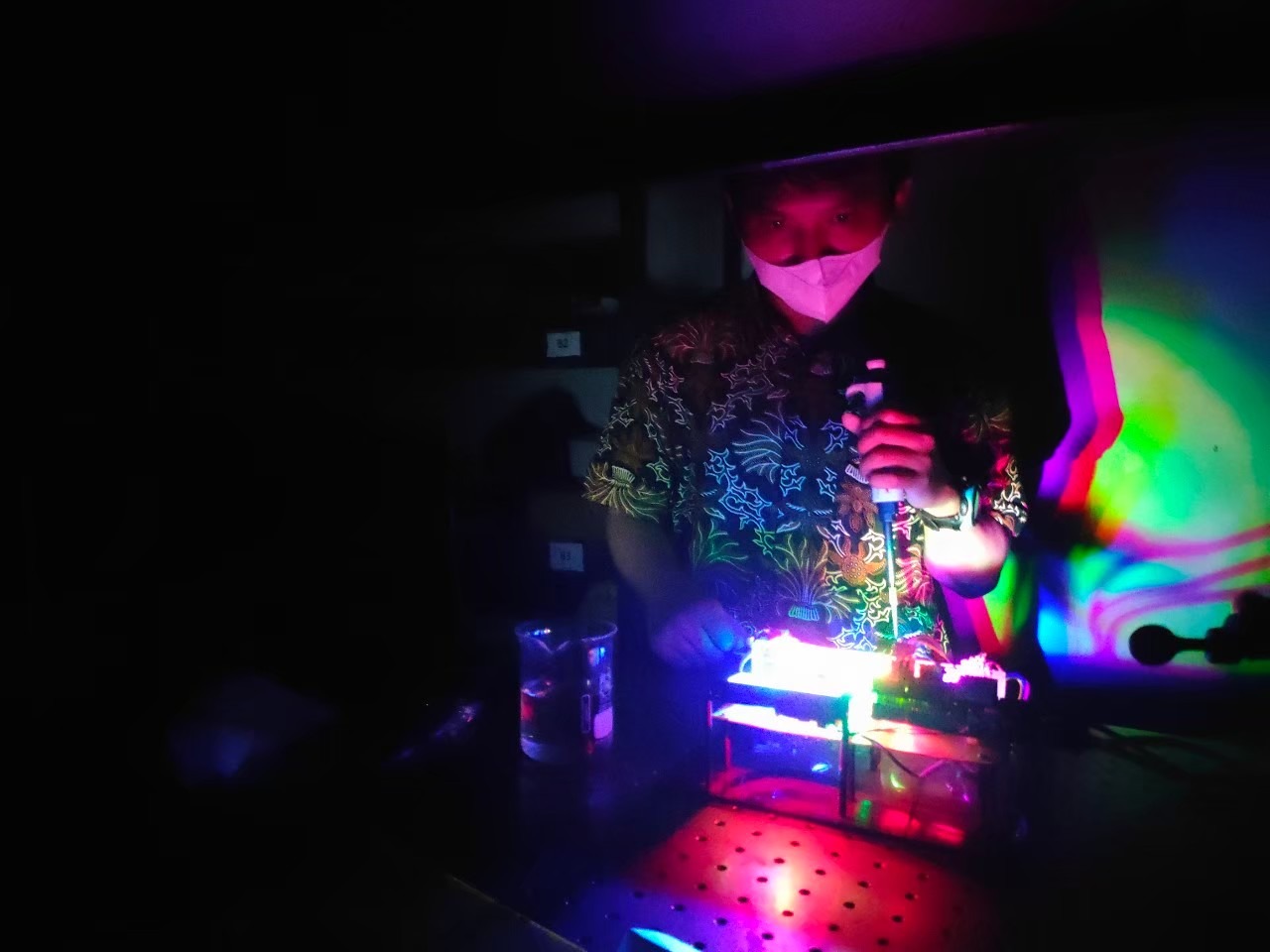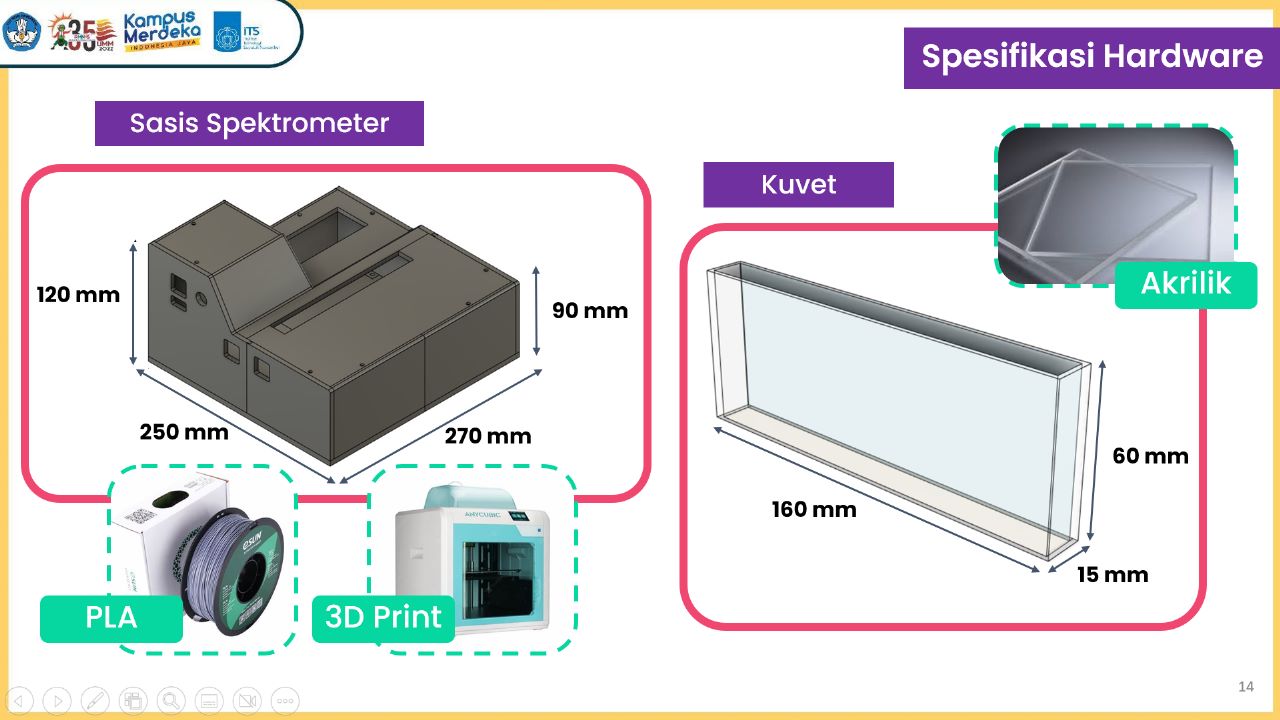ITS Students Innovate a Waste Solution Detection Tool

(from left) Safri Aulia Rusdi, Rihin Nur Ikhwan, Charisa Virga Muliyono, and Arda Fridua Putra, who are members of the ITS PKM-KC team
ITS Campus, ITS News – The industrial sector produces various waste solutions of which 80 percent is disposed of without proper treatment. One reason is the failure to identify the contents of the waste. Departing from this problem, a team of students from Institut Teknologi Sepuluh Nopember (ITS) developed a new innovation in the form of a Pentachromatic Spectrometer.
This team developed a Pentachromatic Spectrometer with artificial neural networks to identify organic and inorganic pollutants in industrial wastewater. To treat the waste solution, it is necessary to identify its contents first so that the appropriate treatment process can be determined. Therefore, a tool such as a pentachromatic spectrometer is needed in order to identify the contents of the waste solution quickly and accurately.
One of the team members, Safri Aulia Rusdi, explained that this pentachromatic spectrometer works by determining the absorbance of visible light by a solution. By knowing the absorbance of light, the content of the solution can be determined. “When tested with this spectrometer, the waste will produce an absorbance spectrum,” said the student who is familiarly called Rusdi.
Visible light in question is light that can be seen by the human naked eye with a wavelength between 380 to 750 nanometers. For this tool, light is emitted by five LED lights with different colors, namely purple, green, blue, yellow and red.

Pentachromatic spectrometer tool, designed by the ITS PKM-KC team
To use this tool, continued Rusdi, first the solution is placed in a cuvette and put into the tool. Then, the light from five LED lamps is emitted through the waste solution so that some of the light is absorbed by the solution. “The absorbance value is then determined by a detector using the Lambert-Beer law principle,” explained Rusdi again.
Each solution will have a unique absorbance level for the five emitted colors. For example, if a solution absorbs excessive red light, then the absorbance level of the red light will have a high value and vice versa.
The last stage of this process is to enter the absorbance values of the solution for all five colors of light into a computer. This computer will use the Feed Forward Neural Network (FFNN) Artificial Neural Network algorithm to match the absorbance values obtained by the pentachromatic spectrometer with the previously created database. “After this, the contents of the solution can be immediately identified,” he added.
Overall, according to Rusdi, this process has several advantages compared to processes using a more conventional ultraviolet (UV) spectrometer. The first, this process is relatively faster. After inserting the cuvette into the apparatus and taking the light absorbance measurement, the solution content can be determined on the spot. “The process of identifying the content using a UV spectrometer can take one day or more,” said this ITS Engineering Physics Department student.

Testing various solutions against light absorbance for database additions
Not only that, said Rusdi, the cost of making this pentachromatic spectrometer is relatively cheaper. In total, the production cost of a pentachromatic spectrometer is only around Rp. 2 million. This cost includes all components and workers’ wages. “An ordinary spectrometer can be up to tens of millions of rupiah, Rp. 14 million and above normally,” he said.
Even with these advantages, Rusdi explained that this tool still has quite extensive development potential. The level of accuracy of this tool can be further improved by improving the FFNN ANN algorithm and its database. Not only that, the cuvette which is used as a container for the solution can be connected directly to the wastewater channel so that the waste identification process can be carried out even faster.

Pentachromatic Spectrometer chassis design and cuvettes along with their dimensions designed by the ITS PKM-KC team
Thanks to the hard work of all team members who were guided by ITS Physics Department lecturer Dr. rer nat Ruri Agung Wahyuono ST MT, this pentachromatic spectrometer was able to be developed successfully. As a result, the Karsa Cipta Student Creativity Program (PKM-KC) team helped ITS succeed in achieving third place in the 35th National Student Science Week (Pimnas) by winning gold and bronze medals in the Poster and Presentation class. (ITS Public Relations)
Reporter: Kevin Bahari Pratama
Related News
-
Supporting the Development of Material Processes, ITS Professors Utilize Biomass Waste
ITS Campus, ITS News — Innovation in material processes continues to develop to support society’s need for environmentally friendly
December 30, 2022 19:12 -
ITS Professor Ideas for Bio-Corrosion Control in Marine Structures
ITS Campus, ITS News — Coastal and offshore buildings interacting directly with seawater trigger damage, including bio-corrosion. If not
December 30, 2022 19:12 -
ITS Launches the First Marine Floating Solar Power Plant Prototype in Indonesia
ITS Campus, ITS News — Institut Teknologi Sepuluh Nopember (ITS)‘s commitment in realizing the energy transition is getting serious.
December 30, 2022 19:12 -
Targeting Champion, Bayucaraka ITS Launches Flying Robot Innovation
ITS Campus, ITS News – The Bayucaraka team at Institut Teknologi Sepuluh Nopember (ITS) has launched four new flying
December 30, 2022 19:12
